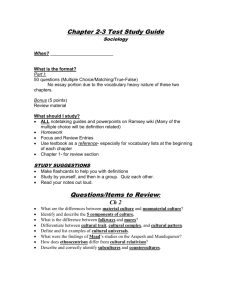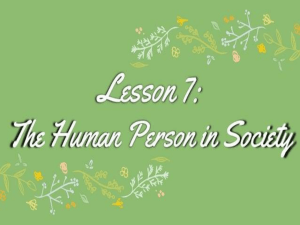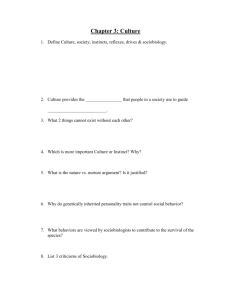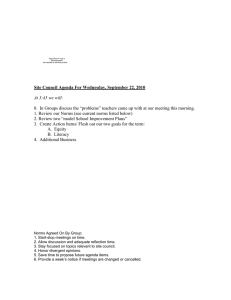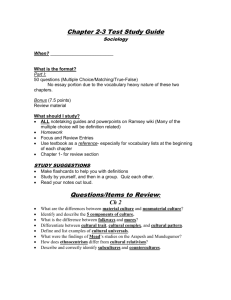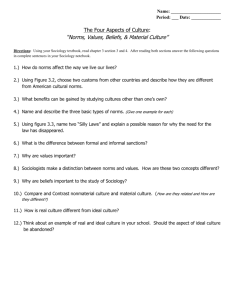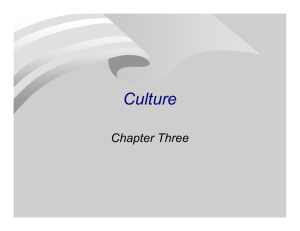Notes on Culture
advertisement
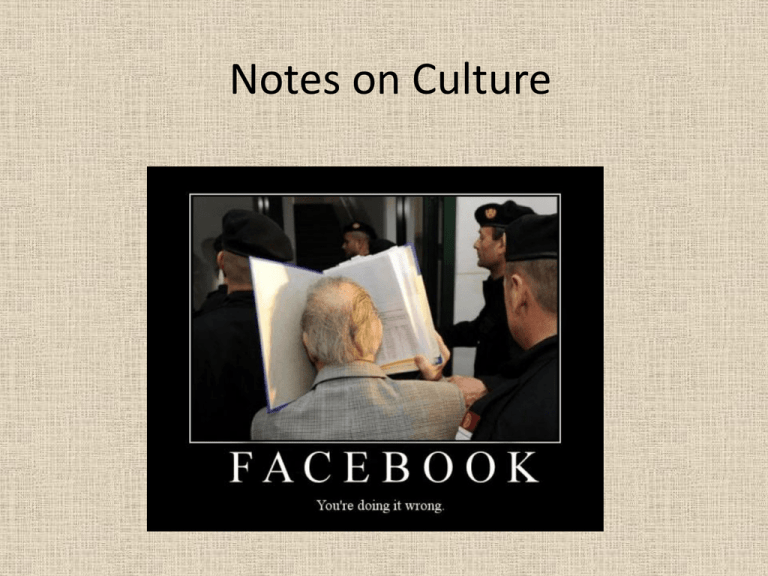
Notes on Culture I. Culture • 1. Consists of the values the members of a given group hold, the norms they follow and the material goods they create. 2. Composed of material and non material • a. Material: all things humans make and use • b. Nonmaterial: totality of knowledge, beliefs, values, and rules for appropriate behaviors. • c. Norms: rules of behavior agreed and shared within culture that prescribes limits to behavior. II. 2 types of Norm violations. • 1. Mores: strong norms based on values/morals of the culture. • 2. Folkways: informal, loosely enforced rules and traditions. • 3. Sanctions: formal and informal reactions to the breaking of norms • Formal- Written, documented sanctions • Informal- Not written III. Cultural Variation-Material culture changes much faster than a non material culture. • 1. Change occurs due to borrowing. • 2. Change also occurs due to invention. • 3. Cultural diffusion-spreading of cultural traits. • IV. 1. Ethnocentrism- judging another culture based on your own customs and values. Avoid by using- cultural relativism: judge an action by their own cultural standards. • 2. Universals of culture-elements of culture that can be found in ALL cultures; examples include: rites of passage, incest taboo, division of labor, ideologies 3. Culture shock-experiencing a new culture for the first time. V. Subcultures-groups within a bigger culture with shared norms, etc. • Ethnic Political • Religious • Social class Occupational Deviant Geographic VI. Art forms and pastimes • 1. Art forms-physical manifestations/symbols of culture. • 2. Pastimes-what people do when they are not working, recreation, do not have to do it. •


